Cultural tourism is not just tourism it is about traveling to different destination to learn about cultures, history and traditions. As seen in festivals, landmarks, and traditions, getting in-depth with a society will open our eyes to the diverse spaces out there. Here is a list of the ultimate cultural travel experiences in the world – the experiences that will help you embrace culture, creativity and human relations.
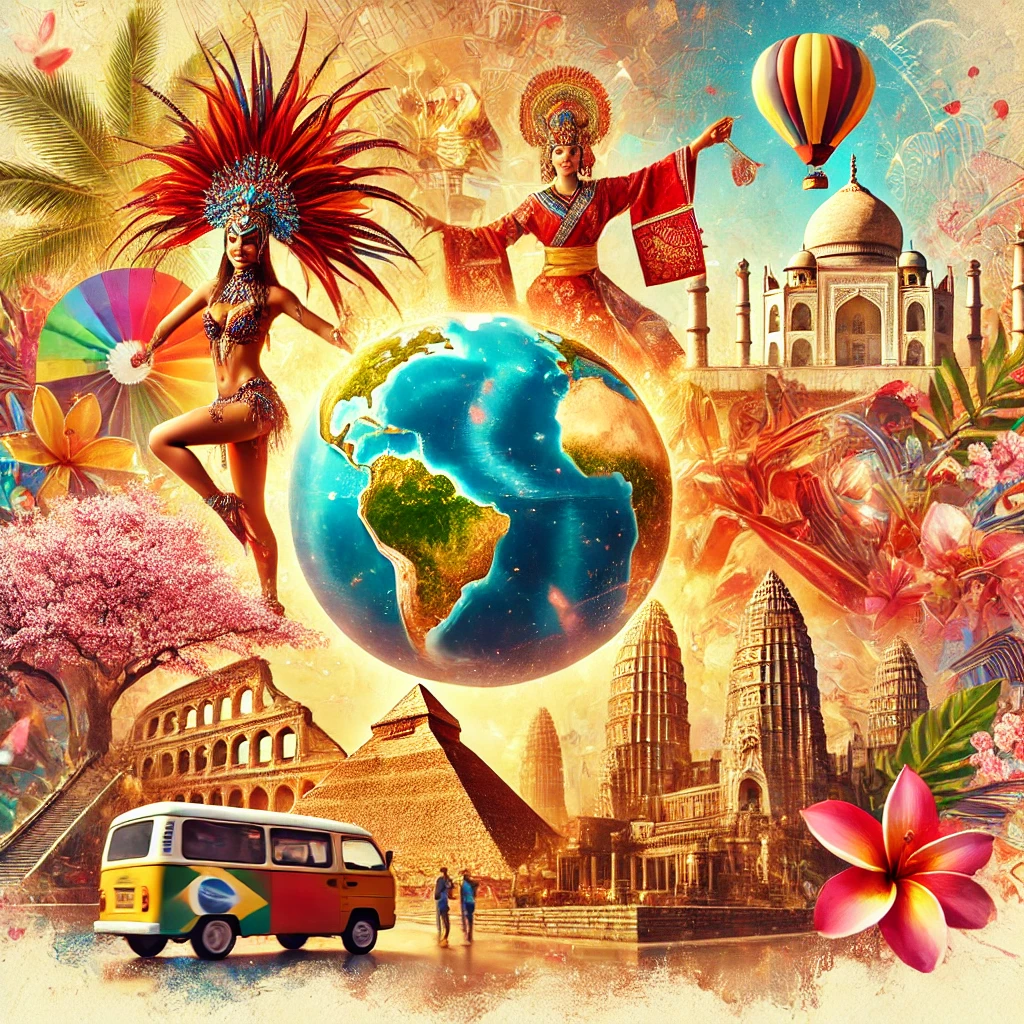
Table of Contents
Introduction
If you enjoy traveling and are searching for something new, cultural travel is definitely for you if you tire of conventional tourism. Culture travels provide a perfect way to look at the world, including history, people and their experiences. From the Asian traditions of women appreciation to Europe art history; all these journeys are about perceiving the world in different ways.
Ready to add depth to your travel itinerary? Let’s explore some of the most fascinating cultural travel experiences across the globe.
1. Join the Carnival in Rio de Janeiro, Brazil

- Why It’s Unique: Rio Carnival is arguably the biggest carnival event in the world with millions of visitors coming each year. It is a colorful, musical, and dancing sort of fun which actually represents Brazil.
- Highlights: That is why there are Samba parades, enormous formalized floats, and colorful costumes. It represents Brazil’s African, European and indigenous heritage.
- When to Visit: It is being held in February or March depending on which five days precede Lent.
- Fact: Rio Carnival draws over 2 million people each day onto the streets, making it the largest carnival in the world.
- Interesting Insight: The celebration dates back to the 1700s, evolving from Portuguese traditions that immigrants brought to Brazil.
With the streets alive with samba rhythms, Rio Carnival allows travelers to experience the passion and vibrancy of Brazilian culture firsthand.
“The energy of Rio Carnival was like nothing I’d ever felt before. The colors, the music, the sheer joy—it was absolutely electrifying! Watching the samba dancers up close was unforgettable.”
— Emily, USA
2. Witness the Cherry Blossom Festival in Japan
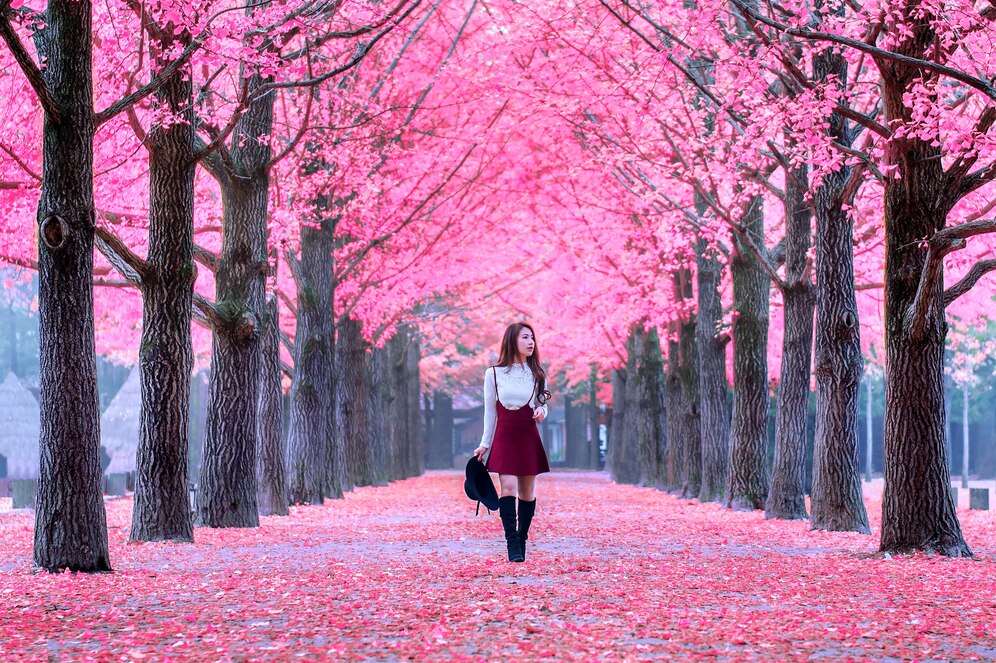
- Why It’s Unique: In Japan, cherry blossom season, or “sakura,” means renewal and beauty. Locals and visitors take in the annual bloom at parks and temples all across the country.
- Highlights: Especially in Tokyo’s Ueno Park and Kyoto’s Maruyama Park, blooming cherry trees are the focus of hanami, or ‘flower viewing,’ parties.
- When to Visit: Peak times vary according to region and happen late March to early April.
- Fact: More than 63% of Japan’s population celebrates hanami, or cherry blossom viewing, annually.
- Bloom Prediction: Each year, Japan’s Meteorological Corporation releases a sakura forecast, helping travelers plan to see the blossoms at peak bloom.
“Witnessing cherry blossoms in Japan was like stepping into a dream. The parks were filled with families and friends celebrating together, and the beauty of the blooms was beyond words.”
— Hiroshi, Japan
A chance to see how Japan holds nature and beauty so sacred, the atmosphere is magical.
3. Explore the Ancient Ruins of Petra, Jordan
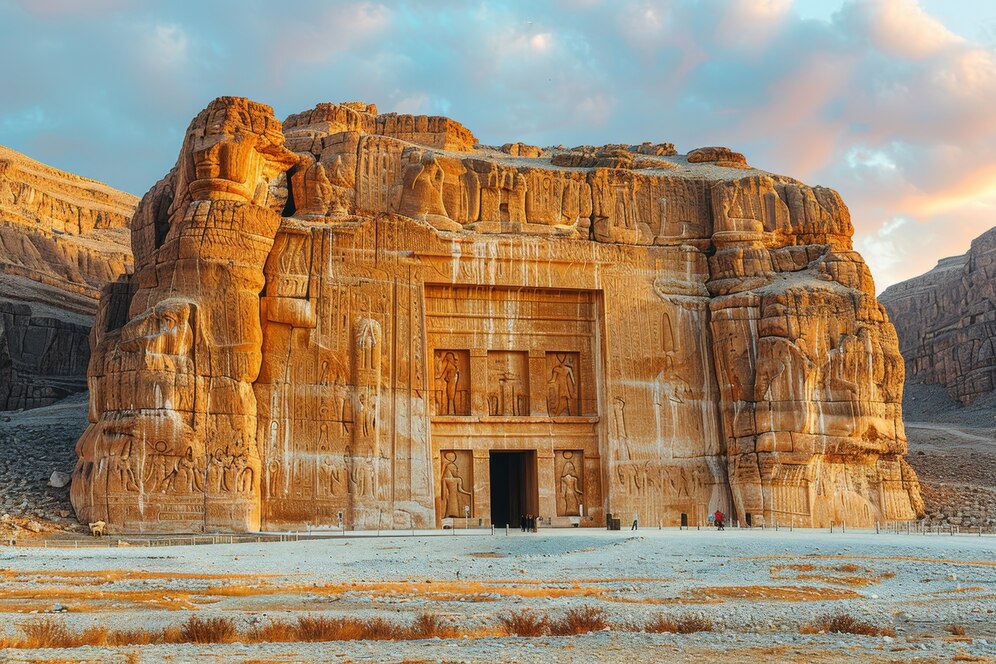
- Why It’s Unique: Petra is known as the “Rose City” because its pink sandstone cliffs go back to 300 B.C., and it is an ancient Nabatean city. Famous for its rock-cut architecture and great historical significance, this UNESCO World Heritage site.
- Highlights: Key to Petra’s popularity are the Siq, a narrow gorge leading to Al-Khazneh (the Treasury) and the Monastery, one of Petra’s largest monuments.
- When to Visit: Cooler temperatures can be had in spring (March to May) or fall (September to November).
- Fact: Fact: Over 1 million visitors explore Petra each year, with 2019 seeing a record 1.1 million tourists.
- Historical Date: Petra, a UNESCO World Heritage site, was built around 300 B.C. and served as the capital of the Nabatean Kingdom.
“Standing in front of the Treasury in Petra, I felt like I was in another world. Walking through the ancient city was awe-inspiring; you could almost feel the history in the air.”
— Amelia, UK
The grandeur of Petra makes it an important place for history buffs and adventurers to at least see and be wowed by the preservation of ancient civilizations.
4. Celebrate Diwali in India
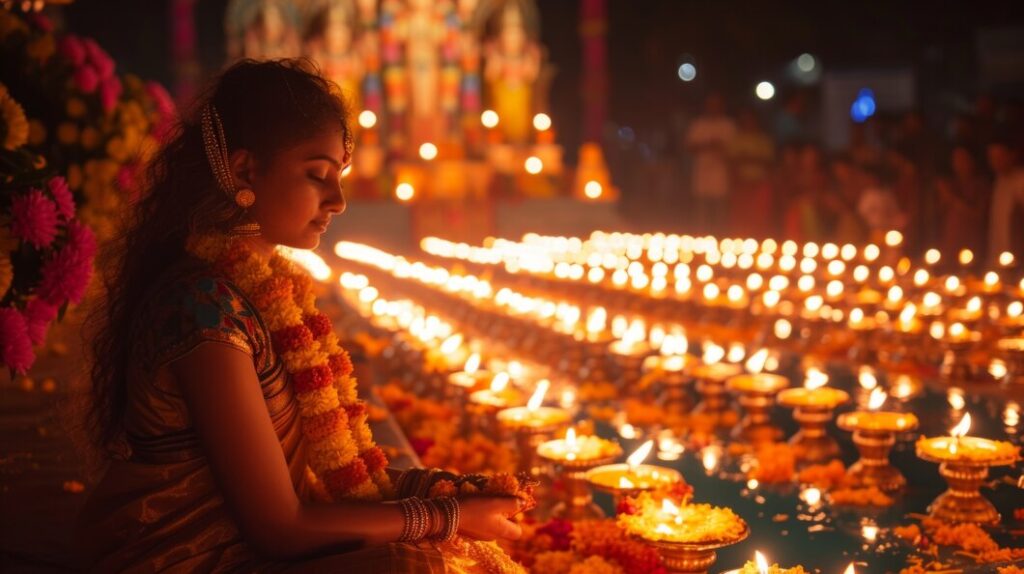
- Why It’s Unique: Festivals like Diwali (The Festival of Lights) are the grand festivals of India and are celebrated for lights and fireworks as well as festive gathering. It represents the triumph of light over dark, of good over evil.
- Highlights: Oil lamps are paraded along streets, families exchange sweets and gifts. In cities like Jaipur, Varanasi and Delhi major celebrations take place.
- When to Visit: It usually occurs between October and November.
- Fact: Diwali is celebrated by over 1 billion people worldwide, from India to the United States.
- Unique Fact: India consumes around 50 million kilograms of sweets during Diwali, as families and friends exchange them in celebration.
“Being in India for Diwali was a heartwarming experience. The streets were glowing with lights and the sense of community was so powerful. It was a beautiful way to experience Indian culture up close.”
— Rajesh, India
Travelers experience India’s spirituality, traditions and festive energy with light and joy through the Diwali!
5. Visit the Pyramids of Giza in Egypt

- Why It’s Unique: Built more than 4,000 years ago, the Pyramids of Giza are considered some of the world’s most famous and fascinating structures. They are architectural marvel built as tombs for the pharaohs.
- Highlights: The Great Pyramid, the Sphinx and the amazing views over the desert are all to be experienced.
- When to Visit: When temperatures are milder, from October to about April.
- Fact: Norway’s Tromsø area has clear views of the Northern Lights about 75% of winter nights.
- Aurora Borealis Science: The Northern Lights are caused by solar particles colliding with gases in Earth’s atmosphere, creating vibrant green and purple hues.
“Walking up to the pyramids is a feeling like no other. The sheer size and history are humbling. I’d read about them all my life, but seeing them in person was a dream come true.”
— Mohamed, Egypt
An unforgettable journey into ancient Egyptian civilization and its legendary architectural wisdom, Exploring the Pyramids tells the story of the rise of this architecture.
6. Experience Tango in Buenos Aires, Argentina

- Why It’s Unique: It’s not just about dancing, however: Tango is an incredibly emotional form of expression, and part of Argentina’s cultural identity. Tango is of course born in Buenos Aires, and there are plenty of milongas (dance halls) for you to watch or take part in.
- Highlights: It has also been responsible for the puja festival, Buenos Aires Tango Festival, famous tango shows in La Boca, San Telmo and El Caminito.
- When to Visit: Festival time is August, but you can see events taking place throughout the year.
- Fact: Tango originated in Buenos Aires in the 1880s, blending African, Spanish, and Italian cultural influences.
- Annual Festival: The Buenos Aires Tango Festival draws over 500,000 people each year and includes performances, competitions, and free dance classes.
“The tango in Buenos Aires is more than just a dance—it’s a cultural heartbeat. Watching a tango show in San Telmo made me feel deeply connected to the soul of Argentina.”
— Isabella, Italy
Tango presents a soulful attempt to descend into Argentina’s culture, combining a little romance, tradition and art.
7. Observe the Northern Lights in Tromsø, Norway
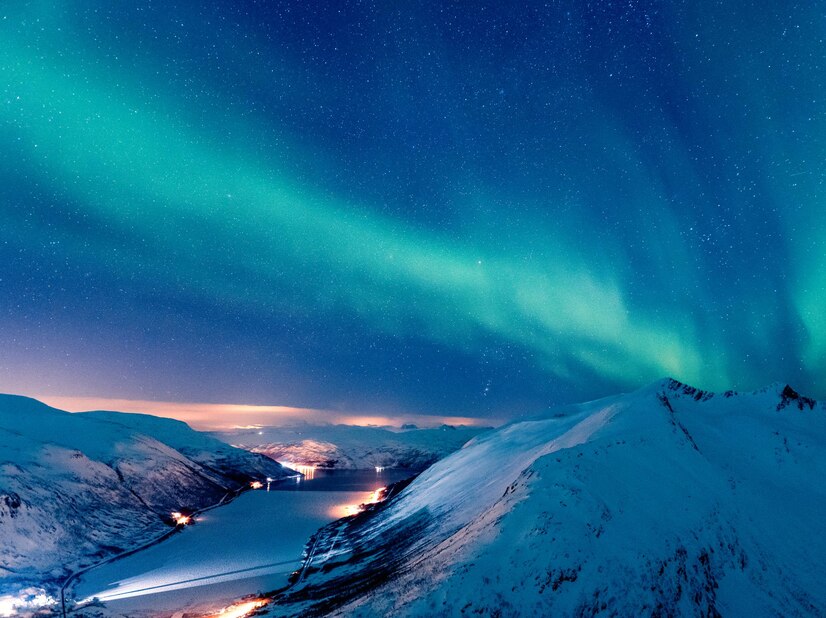
- Why It’s Unique: If you’re looking for one of the most amazing natural phenomena, the Aurora Borealis (Northern Lights) is certainly up there. Being in Norway’s Arctic Circle, Tromsø is the perfect place to see this magical display.
- Highlights: You can finish your Arctic experience enjoying guided excursions, dog sledding, or in an ice hotel.
- When to Visit: When the skies are dark enough that you can see the lights.
- Fact: The Great Pyramid of Giza, built around 2560 B.C., held the title of tallest man-made structure for over 3,800 years.
- Visitor Numbers: Egypt welcomes over 14 million tourists annually, with many drawn to the ancient pyramids.
“Seeing the Northern Lights in Tromsø was like watching nature’s most breathtaking light show. The Arctic silence and the stunning colors in the sky made it feel like a truly once-in-a-lifetime experience.”
— Lars, Norway
Experiencing the Northern Lights creates awe-inspiring cultural immersion, and is something you aren’t likely to forget.
8. Explore the Temples of Angkor Wat in Cambodia
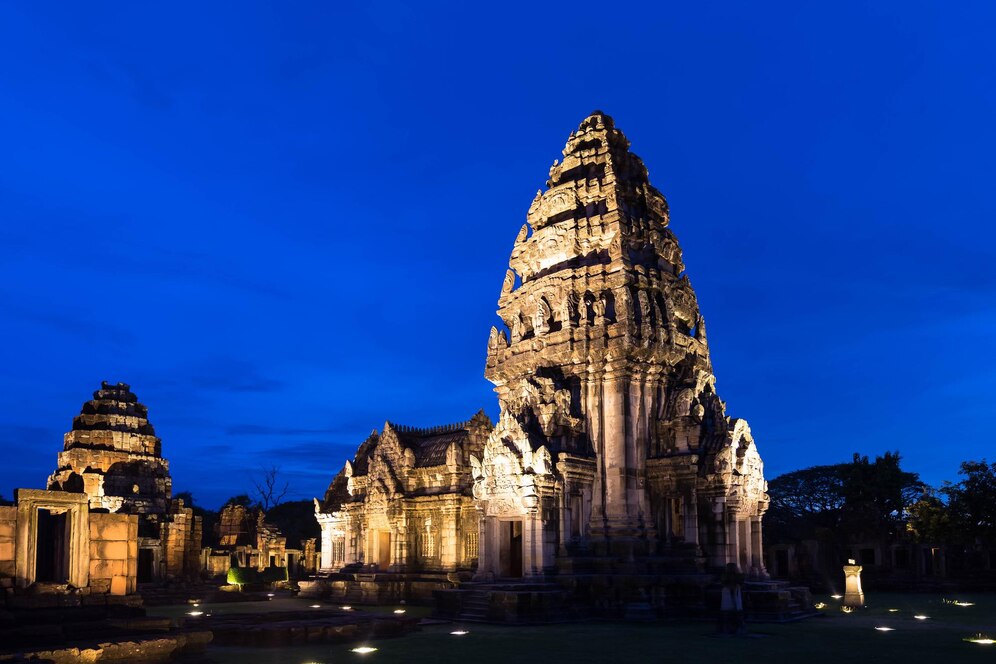
- Why It’s Unique: The Khmer Empire gave us Angkor Wat, the world’s largest religious monument, and an architectural masterpiece. It’s a tourist site and a repository of history.
- Highlights: Something to check out dawn Angel facade is Angkor Wat and then a little closer the Bayon Temple with its well known stone faces.
- When to Visit: To avoid the rainy season and high temperatures, November to February.
- Fact: Angkor Wat covers 162.6 hectares, making it the largest religious monument in the world.
- UNESCO Recognition: The temple complex was designated a UNESCO World Heritage site in 1992 due to its historical and architectural significance.
“Seeing the sunrise over Angkor Wat was simply magical. I felt an overwhelming sense of peace walking through the temple grounds, surrounded by centuries of history.”
— Lina, France
Through exploring Angkor Wat one can really connect with the cultural travel heritage and spiritual roots of Cambodia.
Conclusion
Cultural travel let’s you see the world through new eyes: from the festive energy of Rio Carnival to Japan’s tranquil cherry blossoms. That is, each destination is about something uniquely based in history, tradition, and human creativity. Whether it’s the rhythmic pulses of tango or the wonders of ancient civilizations, or the splendor of natural phenomenon, it is almost certain to be memories you will cherish.
Share this content:

1 thought on “Top Cultural Travel Experiences Around the World: Discover the Best in Global Heritage and Traditions”